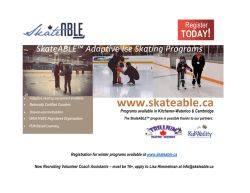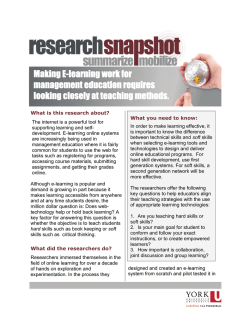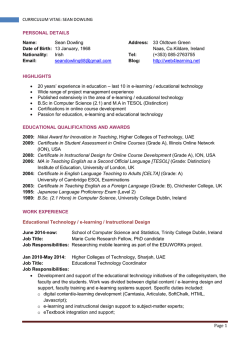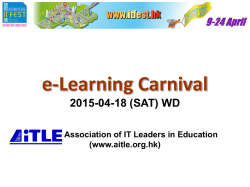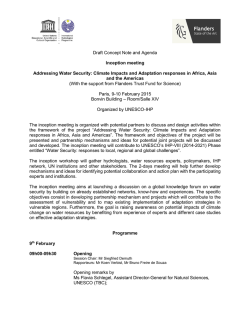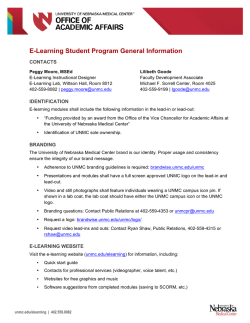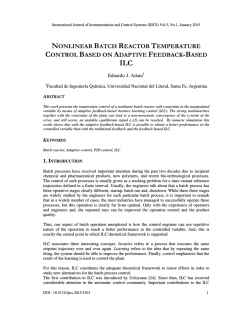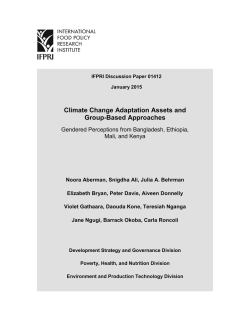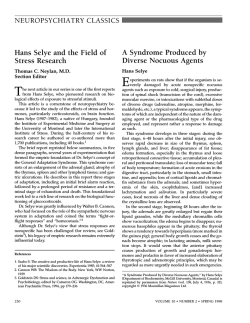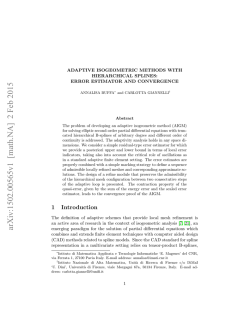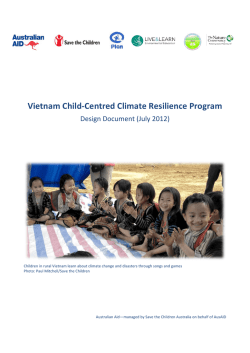
Providing Adaptivity in Moodle LMS Courses
Despotović-Zrakić, M., Marković, A., Bogdanović, Z., Barać, D., & Krčo, S. (2012). Providing Adaptivity in Moodle LMS Courses. Educational Technology & Society, 15 (1), 326–338. Providing Adaptivity in Moodle LMS Courses Marijana Despotović-Zrakić, Aleksandar Marković, Zorica Bogdanović*, Dušan Barać and Srdjan Krčo University of Belgrade, Faculty of Organizational Sciences, 11000 Belgrade, Jove Ilića 154, Serbia // [email protected] // [email protected] // [email protected] // [email protected] // [email protected] * Corresponding author ABSTRACT In this paper, we describe an approach to providing adaptivity in e-education courses. The primary goal of the paper is to enhance an existing e-education system, namely Moodle LMS, by developing a method for creating adaptive courses, and to compare its effectiveness with non-adaptive education approach. First, we defined the basic requirements of a course adaptation and the steps required to implement it. Based on the collected data, we identified the characteristic groups of students and then classified all participating students into these groups. The final adaptation of courses was performed in the distance education system of the University of Belgrade, in the Laboratory for e-business, Faculty of Organizational Sciences. Findings of the experimental study showed that the students’ effectiveness and achievements in learning were higher when they attended courses adapted using the described method, in comparison to the non-adaptive e-learning courses. Keywords Adaptive e-learning systems, e-Learning course adaptation, Group personalization, Moodle LMS Introduction Learning management systems (LMS) are powerful integrated systems that support a number of activities performed by teachers and students during the e-learning process 00. Teachers use an LMS to develop web-based course notes and quizzes, to communicate with students and to monitor and grade student progress. Students use it for learning, communication, and collaboration. One of a widely used open-source systems for learning process management is Moodle (Modular Object Oriented Developmental Learning Environment) 0. Moodle LCMS is in use for the last five years in the teaching process at the University of Belgrade, in the Laboratory for e-business of the Faculty of Organizational Sciences. Each school year, more than 700 students use this system on all the study levels (undergraduate, master, and PhD studies). Elearning courses include the following areas: Internet technologies, E-business, Computer simulation, Mobile computing, and Internet marketing 0. In addition, we use the concept of blended learning throughout the whole teaching process 0. Adaptive e-learning systems In most cases, LMS users belong to heterogeneous groups with different individual, sometime even adverse, characteristics and needs. The adaptation of e-education systems to an individual or to a group based on their characteristics, expectations, knowledge, and preferences of the students is the next step in the evolution of the elearning systems. The lack of adaptive learning environments or an environment with adaptive features is partly due to the “one-sizefits-all” concept 000 in use today which presents the same static content to all students. Several studies suggested that this type of e-learning system organization were not successful 00. Therefore, the emphasis is moving towards learner-oriented platforms and putting student’s expectations, motivation, habits, learning styles, needs, etc. in the focus of interest 0. According to 0, an e-learning system is considered to be adaptive if it is capable of: monitoring the activities of its users; interpreting these on the basis of domain-specific models; inferring user requirements and preferences out of the interpreted activities, appropriately representing these in associated models; and, finally, acting upon the available knowledge on its users and the subject matter at hand, to dynamically facilitate the learning process. Since the system behavior adapts to a person, this kind of adaptation is also called personalization. Thus, adaptive eISSN 1436-4522 (online) and 1176-3647 (print). © International Forum of Educational Technology & Society (IFETS). The authors and the forum jointly retain the copyright of the articles. Permission to make digital or hard copies of part or all of this work for personal or classroom use is granted without fee provided that copies are not made or distributed for profit or commercial advantage and that copies bear the full citation on the first page. Copyrights for components of this work owned by others than IFETS must be honoured. Abstracting with credit is permitted. To copy otherwise, to republish, to post on servers, or to redistribute to lists, requires prior specific permission and/or a fee. Request permissions from the editors at [email protected]. 326 learning system can be described as a personalized system, which in addition to the content discovery and assembly, is able to provide an adaptive course delivery, an adaptive interaction, and an adaptive collaboration support 0. AWBES (Adaptive Web Based Educational System) were developed upon the AHES (Adaptive Hypermedia Educational System) theoretical concepts 00. The web based educational system incorporates adaptivity and intelligence by building a model of individual learner’s goals, preferences, and knowledge. The system is then adapted to the learner’s needs by using this model throughout the course delivery. For more details on theoretical concepts and the realization of these systems in practice please see 0 0 0 0 0 0 00. Providing adaptivity in e-education system Adaptive e-learning systems focus on adapting the courses to the individual characteristics of the students. These systems are found to perform better than LMS 00. Adaptive quizzes, intelligent solution analyzers, adaptive class monitoring systems, and adaptive collaborative systems perform their respective functions more efficiently. We should bear in mind, however, that these systems have a certain number of constraints: Creating adaptive e-learning systems and their incorporation into the educational processes is a rather complex and expensive process that requires a high level of engagement from all participants in the process. Such systems are designed for the purpose of ensuring adaptive functionality, however, in practice they frequently turn out not to fit into the learning process. One common problem is that the learning content is impossible to recreate and use anew. The systems are not interoperable. They are developed as isolated applications and they cannot exchange either resources or data on students. The research has shown that these systems are most often isolated applications and experimental solutions with a limited interface 0000. The basic services of the e-learning systems, such as course administration, contents creating, etc. are much more difficult to carry out in adaptive systems. Due to the complexity of the systems, the users are expected to have some pre-existing knowledge of the system itself. The services that often lack most in the communication and social interaction between the participants in the elearning process are chat, forum, and videoconference. For many courses, the time is an important factor, i.e. it is not possible to learn about the students’ needs during a course and then adapt it due to the lack of time. In such scenarios, it is preferred to have information about the students’ preexisting knowledge and experience as well as the intended usage of the course content in advance to maximize the time a student spend in a personalized environment. AWBES does enable full adaptation, but it does not guarantee its timeliness. The key problems in adaptive systems, therefore, are reflected in the architecture and realization of the system, rather than in its essence – adaptivity. On the other hand, the LMS do not provide an adequate level of adapting of contents and services 00. Some authors present new approach to adapting LMS 00 0: embed AH functionality into modern web-based courses using adaptive hypermedia services that can be chosen by the classroom teacher and attached to courses as a single reusable component. Adapting LMS in such a way requires development of new software modules. These software modules can become obsolete and incompatible with each new version of LMS which makes the process inefficient. Personalization based on learning styles Student modeling is the process whereby an adaptive learning system creates and updates a student model by collecting data from several sources implicitly (observing user’s behavior) or explicitly (requesting directly from the user). Traditionally, the majority of the student modeling systems have been limited to maintain assumptions related to student’s knowledge (acquired during evaluation activities) without paying too much attention to student’s preferences 00. 327 Learning is a cognitive activity that differs from a student to a student. Analyzing adaptability in an e-learning system has explicitly pointed out the importance of the modeling learners’ cognitive characteristics, particularly learning styles as the most explored cognitive features. There are several different learning style models presented in literature 0; however, Felder-Silverman Learning Styles Model (FSLSM) is often used for providing adaptability regarding learning styles in e-learning environments 0. Felder-Silverman model describes a single student along four dimensions 0: 1) Active and reflexive learning style; 2) Sensitive and intuitive learning style; 3) Visual and verbal learning style;4) Sequential and global learning style. Research objectives The primary goal of the study was to develop an efficient method for creating adaptive distance education courses in the Moodle LMS. The courses will be organized and adapted to groups of students. Adaptation is based on students’ characteristics, particularly learning styles. The following steps were used: Defining main phases and requirements in developing personalized e-education systems; Clustering students by their learning styles; Personalization and adaptation of e-learning courses. The key idea of this paper is based upon adaptation of courses within the existing Moodle LMS, in order to eliminate the need for developing new modules or designing entirely new solutions. The e-learning system used in the research and described in this paper is used by a large number of users/students daily. The idea was to perform adaptation in such a way to make process economically justified, not time consuming, bearing in mind the environment in which the courses were conducted. Personalization we would achieve in our system is a personalization for a group, not for a person. We claim that this approach is appropriate for three reasons: 1. When the courses are attended by a large number of students, due to the numerous differences in their individual characteristics, the personalization for each student individually is not justified. Taking into consideration the existing differences, some common features can be identified and then they can be assigned into respective groups on the basis of these features. 2. Group personalization can be achieved at the beginning of the course. Therefore, a student will be provided with an adapted online course during the whole learning process. 3. Group personalization is cheap and efficient. Teachers need to adapt learning materials and activities to typical groups of students instead of to each student. This is particularly efficient when a large number of students attend the course. If the adaptation is done at the beginning of the learning process, some of the AHS disadvantages will be overcome. By using students’ learning styles it is possible to define typical learning groups and to assign new students into the groups at the beginning of their courses. The data needed for classifying the new students into these groups can be gathered promptly, by using an appropriate questionnaire or a test, and analyzed with some of the business intelligence tools 0. Each group of students will be provided with specific teaching materials and activities, suited to their learning style. This approach enables adaptation controlled by teacher, and also adaptation that does not depend upon the version of Moodle LMS. It is not necessary to change or add modules. The adaptation is achieved through the customization of Moodle LMS. Personalization is not performed for all the characteristics, but only for those the research findings designate as the most important. It is in such a way that the economic and time efficiency of the adaptation process is achieved. In the proposed model, there are no automated adaptation mechanisms. However, the activities the course organizers have to perform to carry out the course adaptation can be automated to a certain extent. Method for Moodle course adaptation In order to improve the process of personalization in e-learning systems and improve its effectiveness, its main phases and requirements have to be identified first 0. The steps shown in Figure 1. should not be conducted 328 separately, but as integrated components of an iterative and dynamic process of developing an adaptive e-education system. Figure 1. Phases in developing personalized e-education systems Data for this analysis come from a testing sample of 318 undergraduate students at the University of Belgrade, Faculty of Organizational Sciences. Experimental group consisted of 218 and control group consisted of 100 students. Methods and procedure 1. Defining e-personalization goals and models: The main goal of this study was to implement an adaptive e-learning system. The substantial part of the research was realized through dividing students who attend our e-learning courses into different clusters according to their learning styles. 2. Collecting data about students for course personalization Data about the students are collected from two sources: the questionnaire and the introductory course. I phase - Questionnaire Due to the personalization process constraints, not only in relation to the courses, but also to the distance education system itself, we designed a questionnaire according to the FSLSM. Main constraints are related to: time limit (only one semester for course), not having enough data about all students’ characteristics, big number of students, variety of different topics, materials, and e-learning course activities. In order to overcome these problems it was decided to formulate the questions so as to represent the four FSLSM dimensions of learning styles. The FSLSM dimensions are then connected to the functionality of the Moodle to enable easier implementation in a real system. 329 The survey consisted of 30 questions of which some dealt with general information (average grade, year of study) while the others were about motivation for learning, preferred style of communication, the manner of presenting subject matter, managing time and team work. II phase – Introductory course In order to obtain more data about students’ learning styles, we organized an introductory course that lasted for one week, involving all types of activities, resources, and materials. The course was created in Moodle LMS. It dealt with different aspects of e-business: e-commerce, e-government, customer relationship management, Internet marketing. The course was not adapted in any way, just like the other courses in Moodle. In order to complete the course, students had to pass a test designed to assess knowledge acquired from different types of materials and activities: text and multimedia materials, web pages, as well as activities available in Moodle (assignments, lessons, quizzes, forum discussions, etc). The test results were to be used to determine students’ learning styles. 3. Exploring collected data All the data collected in the two described phases were integrated into a single table in such a way that each question from the questionnaire and from the test represented one column. The rows represented answers of the students. This table was suitable for further analysis and data mining. Upon integration, the data were transformed and reduced. The number of options in the answers were transformed and reduced to three, and the missing data were replaced with mean values. 4. Classifying students Data mining is one of the business intelligence techniques and can be defined as the nontrivial extraction of implicit, previously unknown and potentially useful information from large data sets or databases 0. Although personalized recommendation approaches that use data mining techniques have been first proposed and applied in e-commerce for product purchase, different data mining techniques were also applied within the e-learning recommender systems 000. By using data mining tools and techniques it is possible to conduct an intelligent analysis of large quantities of data stored in a database. Data mining can be used both as a means for predicting unknown or future values of the attributes of interest and for describing embedded patterns that will contribute to generating the best possible personalized e-learning models 0 00. Clustering, as a data mining technique, was applied in building data mining model on the integrated data set prepared in the previous phase. Clustering algorithm finds natural groupings among data related to sets of input attributes, so that attributes within one group (cluster) have approximately the same values, while notable differences exist between groups (clusters) 0. It could be asserted that the main aim of clustering is to discover hidden values and variables, upon which data can be precisely arranged. Clustering was carried out using the SQL Server Analyses services 0, a Microsoft clustering algorithm based on the K-mean algorithm 0 0. A set of guiding questions were formulated in order to lead the process of creating data mining structures in the right direction: What is the most appropriate number of clusters? What are the main characteristics within the clusters and what are the differences between them? Which input variable, i.e. learning style, has a dominant influence in grouping the students? Is the mining model created suitable for making forecasts? Which content should be delivered to students from individual clusters? The answers to these questions are given in the text that follows. An experiment was conducted for the cases of two and three clusters. By processing and mining available data, it was determined that the results showed almost the same level of accuracy, regardless of whether the students were divided into two or three clusters. However, in the latter case, the outcomes were more consistent, logical and of higher quality. Therefore, the outputs and the conclusions drawn from the experiment with three groups will be presented here. 330 For each cluster the most important characteristics and related learning styles are presented in Figure 2. Figure 2. Clusters and related learning styles Distribution of students by clusters is shown in Table 1. Most of the students were classified into cluster 2, which represents a combination of intuitive, active and global learning styles. Cluster Cluster 1 Cluster 2 Cluster 3 Table 1. Distribution of students by clusters % of students in the cluster 26% 61% 13% Figure 3. shows factors that have the biggest impact on classification. The aptitude for the presentation of teaching materials is of greatest importance for the classification of students. Also, it is important who sets the topics for essays and deadlines for exam obligations, the teachers or the students themselves. Figure 3. Factors that have the biggest impact on classification 331 Created data mining model needs to be validated. The comparison method applied here is called ‘the mining accuracy lift chart’ 0 (Figure 4). The results were sorted and plotted on the graph together with the ideal model, that is, a theoretical model with the accuracy of 100%. If the state of the predictable column, i.e. forecasted class in this case, is specified, than the quality of the model can be analyzed. The X-axis of the chart represents the percentage of the test dataset that is used to compare the predictions. The Y-axis of the chart represents the percentage of values that are predicted to be in the specified state, i.e. Cluster 1. It is important that it is significantly above the blue line that represents “random guess line”. The line that indicates the “ideal model” 0, shows that it would “catch” 100% of predicted population (Cluster 1) by using about 50% percentage of the available data in the model with three clusters. The classifying model would catch 100% of students arranged in Cluster 1 by using approximately 80% of total data. Figure 4. Model validation - lift chart It is essential to point out that the clustering results obtained served as the basis for the adaptation. 5. Courses adaptation according to the defined groups (clusters) Using the results of this research, the students were divided into three groups and changes and adaptations have been made in our e-learning courses for these 3 groups. The courses were undertaken in accordance with the activities, the scope and the schedule proposed in the previous phase. The next paragraph describes in detail how the adaptation was done. There were some similar characteristics for all students, like working in teams or passing exams sequentially. Indicated requirements were filled for all of them by making some options globally available. To build the initial model, the system’s authors first must establish the rules to match learning styles with the resource’s characteristics in order to determine which resources are better suited to a particular learning style 0. According to 000, Moodle is LMS that can provide all important functionalities and services. At the same time, Moodle is flexible when it comes to insertion of new elements and integrations with other systems and technologies necessary for the adaptation to take place. Table 2. shows the relations among different learning styles and activities in Moodle learning management system. The adaptation of courses is performed in accordance with the presented rules. 6. Adaptive courses realization Due to the fact that the main goal was to do some fine-tuning of the courses, the final adaptations based on proposed generic model and discussed relationships between learning styles and different types of presentation were reflected in: 332 Course level adaptation - students in Group 1 and 2 were allowed to determine time-limits for finishing the examination, while certain conditions were set for the students in Group 3. Teaching materials - Group 1 was provided with pictures, videos, graphs, animation, and hypertext materials; Group 3 was provided with text and audio materials. Group 2 was provided with combination of multimedia and written materials. Examination - Students in Group 1 were assigned to do projects or case studies. At the same time, students in Group 3 were obliged to do essays instead of projects. Learners from Group 2 could choose between practical and theoretical tasks. Activities - Generally, almost all activities were available for students. The only difference was the way these activities were organized in (Figure 5.). Chat Visual Forum Concrete problems Topics for thinking No Verbal Sequential Active Reflexive Global Sensitive Intuitive Yes Table 2. Moodle suitability for adaptation Moodle activities Glossary Workshop Survey Choice Many Experiment No Yes terms Lesson Problems examples Face-to-face No Concepts Unexplored topics Yes Yes No No Yes Yes Yes Yes Yes Yes Yes Yes Yes Yes Frequent Yes Yes No Yes Yes Combined No No Yes Yes Rarely Rarely Combined Yes Yes Yes Yes Facts, algorithm Combined No No Yes No Rarely Combined Global topics Facts, examples Abstract topics Practical examples Unexplored topics Provided topics Collaboration methods Illustration Written, multimedia Email Combined Combined Figure 5. Course adaptation 7. Assessment of personalized courses The final phase in developing an adaptive e-learning course is the testing of its effectiveness, functioning of the personalized model, and comparing it with the effectiveness of the course before adaptation. Experiment included three instruments: a) pre-test, b) post-test, and c) survey for examining students attitudes towards adapted online courses. Students in both experimental and control group have taken pre-test after the introductory course. Pre-test 333 dealt with the matter taught at the introductory course. Post-test have been taken after completion of adapted online course for students in experimental group and nonadapted course for students in control group. Post-test was used to determine if there were significant differences in results achieved by students in experimental and control group. After the experiment, students in the experimental group were asked to fulfil questionairre on their attitudes and impressions on adapted course. The next chapter deals with further analysis and validation. Results and discussion In this chapter we present and discuss the findings of the experiment. Table 3. shows the percentage of students who passed or failed the exam in e-business, organized through nonadaptive and adaptive online courses. The number of students that passed exam by attending a nonadaptive course is close to the average number from the previous years. The percentage of students who passed the exam is by 11% higher in the case of the adaptive e-learning environment. Table 3. Students’ performance in the non-adaptive and in the adaptive course Adaptive course Nonadaptive course 94% 83% % of students who passed 6% 17% % of students who failed Figure 6. Grade comparison in non-adapted vs. adapted course Comparing the students’ marks on the non-adaptive course with those on the adaptive course, we can see that it is in the adaptive course that a larger number of students got higher marks. In the case of the non-adaptive course, students’ marks were distributed near to normal distribution, while in the adaptive course a fairly large number of students received the highest mark (Figure 6.). In the grade system used, mark 5 is assigned to students who failed, while the marks of the students who passed range from 6 (lowest passing mark) to 10 (highest mark). Statistical analysis of the gathered data was performed in order to determine if results achieved by students are statistically significant. We used: Independent t-test to determine if the difference between experimental and control groups was statistically significant in the results achieved in the pre-test. Independent t-test to determine if the difference between experimental and control groups was statistically significant in the results achieved in the post-test. Paired samples t-test to determine if the difference in the results in the pre-test and the post-test for students in the experimental group is statistically significant. Paired samples t-test to determine if the difference in the results in the pre-test and the post-test for students in the control group is statistically significant. 334 We defined the following statistical hypotheses: Null hypothesis H1: There is no significant statistical difference in the pre-test results between the experimental and the control group Null hypothesis H2: There is no significant statistical difference in the post-test results between the experimental and the control group Null hypothesis H3: There is no significant statistical difference between the pre-test and the post-test results of the experimental group Null hypothesis H4: There is no significant statistical difference between the pre-test and the post-test results of the control group The comparative descriptive statistics is shown in Table 4. Table 4. Comparative descriptive statistics of pre-test and post-test results N Mean Std. Deviation Results Pre Post Pre Post Pre Post Experimental group 218 218 8.05 8.25 1.132 1.096 Control group 100 100 8.14 8.02 1.078 1.228 The results of the independent t-test showed that the difference between the experimental and control group results achieved in pre-test is not statistically significant (t=-0.706, df=316, p>0.05), which supports the null hypothesis H1. The results of the independent t-test also showed that difference between the experimental and control group results achieved in post-test is statistically significant (t=1.700, df=316, p<0.05), therefore, we reject the null hypothesis H2. Using the results of the independent t-test, we can conclude that students in the experimental and the control grous achieved the same results in the pre-test, but the results achieved in the post-test are better in the experimental group. To compare the results of the pre-test and the post-test, we have used a paired samples t-test. The paired samples ttest showed that the difference in the results achieved by the students in experimental group in the pre-test and the post-test is statistically significant (t=-0.202, df=217, p<0.05), therefore, we reject the null hypothesis H3. The paired samples t-test also showed that difference in the results achieved by the students in the control group in the pre-test and the post-test is not statistically significant (t=0.708, df=99, p>0.05), which supports the null hypothesis H4. The results of the paired samples t-test show that the students in the experimental group achieved significantly better results in the post-test in comparison with the pre-test, whereas the students in the control group did not achieve significantly better results in the post-test. Finally, we examined the students’ attitudes towards the adapted e-learning system. The students were asked to answer each of the questions in the survey in that they could choose one of three options: “strongly agree”, “agree” and “disagree”. The survey consisted of three questions: Teaching materials and type of presentation are adapted to my learning style. Activities in the online course are adapted to my learning style. I have a positive attitude towards adapted online course. Since the type of presentation proved to be of primary importance for the classification of students into clusters, we asked the students if the presentation of the subject matter in adapted courses was suited to their learning style. Only 5% of the students replied that the type of presentation was not adjusted to their learning style, while 50% agreed and 45% strongly agreed that the type of presentation was adapted to their learning style. When asked if the adaptive course suited their learning style most students strongly agreed that it did (49%), 47% of students agreed, while only 4% answered negatively. Finally, when asked about the overall impression about the adapted online course, 50% of the students reported that their attitude was positive (strongly agree), 45% of the students had a moderately positive attitude (agree), while only 5% of the students replied that their attitude towards the adapted course is not positive. 335 Conclusion Conducted research showed that adaptation of e-courses leads to better results. Proposed method for course adaptation is based on adapting presentation of content, communication methods, and organization of online activities to students’ learning styles and preferences. Analyses of e-learning system adaptivity have shown that cognitive characteristics of students, such as learning style, are of the greatest importance for successful adaptation. Described method for course adaptation is based on using data mining techniques to classify students into clusters with regards to Felder-Silverman learning styles model. Type of presentation of teaching materials had the highest impact on clustering and classification. E-learning courses were adapted using relations between Felder-Silverman’s learning style model and activities in Moodle learning management system. Research results proved that teaching resources and activities adapted to learning styles lead to significant improvement in learning results. Analysis of results showed that students who attended adapted online courses achieved better results than students who attended nonadapted online course. T-test showed that there was statistically significant difference in results achieved by students in experimental group on post-test compared to results of students in control group. Higher number of students passed the test, and they achieved higher grades. Analyses of satisfaction of students in experimental group showed that they had positive attitude towards adapted online course, and they thought that course materials and activities had been adapted with respect to their learning styles. One of the greatest advantages of described method for course adaptation is that it does not require programming new software. Adaptation can be performed without any programming knowledge, and teachers can create adapted courses by adjusting teaching materials and activities in Moodle LMS. The authors of this paper believe that this approach can easily be modified for application in other LMSs as well. The biggest disadvantage of the described approach is that it does not enable real time adaptation. Therefore, it is necessary for teachers to monitor students’ progress and move them to another cluster, if necessary. This type of adaptation requires more teachers’ effort in both creating adaptive course and exploitation. In this research, course personalization has been realized with respect to learning styles as only criterion. Future work will be directed toward providing further data about students with respect to different characteristics, such as pre-knowledge, expectations, etc. Future work will also be directed towards qualitative analysis of described method, as well as suitability for teaching other subjects and application in other learning management systems, Acknowledgement The authors of this paper are grateful to MNTRS for financial support grant no. 174031. References Aroyo, L., Dolog, P., Houben, G-J., Kravcik, M., Naeve, A., Nilsson, M., et al. (2006). Interoperability in Personalized Adaptive Learning. Journal of Educational Technology & Society, 9 (2), 4–18. Aydin, C.C., & Tirkes, G. (2010). Open source learning management systems in e-learning and Moodle. In Proceedings of IEEE EDUCON 2010 - IEEE Engineering Education 2010, Madrid, 14–16 April, 593–600. Brown, E., Cristea, A., Stewart, C., & Brailsford, T.J. (2005). Patterns in Authoring of Adaptive Educational Hypermedia: A Taxonomy of Learning Styles. Educational Technology and Society 8 (3), 77–90. Brusilovsky, P., & Miller, P. (2001). Course Delivery Systems for the Virtual University. In: Tschang, T., & Della Senta, T. (eds.) Access to Knowledge: New Information Technologies and the Emergence of the Virtual University (pp. 167–206). Amsterdam: Elsevier Science and International Association of Universities. Brusilovsky, P. (1996). Methods and Techniques of Adaptive Hypermedia. User Modeling and User-Adapted Interaction, Springer Verlag, 6(2-3), 87–129. Brusilovsky, P. (2001). Adaptive hypermedia. User Modeling and User Adapted Interaction, Springer Verlag, 11 (1-2), 87–110. 336 Brusilovsky, P. (2004). Knowledge tree: A distributed Architecture for Adaptive E-learning. In Proceedings of the 13th international World Wide Web conference (WWW2004) (pp.104–113). New York, USA: ACM. Brusilovsky, P., & Maybury, T.M. (2002). From Adaptive Hypermedia to the Adaptive Web. Journal of Communication of the ACM, New York: ACM, 45 (5), 30–33. Brusilovsky, P., Sosnovsky, S., & Yudelson, M. (2004). Adaptive Hypermedia Services for E-Learning. In Proceedings of Workshop on Applying Adaptive Hypermedia Techniques to Service Oriented Environments at the Third International Conference on Adaptive Hypermedia and Adaptive Web-Based Systems (AH'2004) (pp. 470–479), Eindhoven, the Netherlands. Burgos, D., & Specht, M. (2006). Adaptive e-Learning Methods and IMS Learning Design: An Integrated Approach. In Proceedings of the Sixth International Conference on Advanced Learning Technologies (ICALT'06) (pp. 1192–1193). Kerkrade, The Netherlands. Castro, F., Vellido, A., Nebot, A., & Mugica, F. (2007). Applying Data Mining Techniques to e-Learning Problems. In: L. Jain, R. Tedman, D. Tedman (Eds.) Evolution of Teaching and Learning Paradigms in Intelligent Environment (pp. 183–221). Berlin: Springer. Despotović, M., Bogdanović, Z., Barać, D., & Radenković, B. (2008). An application of data mining in adaptive web based education system. In Proceedings of The Seventh International Conference on Web-Based Education (pp. 394–399), Innsbruck, March 17–19, 2008. Calgary, CA: Acta Press. Felder, R.M., & Silverman, L.K. (1988). Learning and Teaching Styles in Engineering Education. Engineering Education, 78(7), 674–681. Graf S., & Kinshuk (2008). Analysing the Behaviour of Students in Learning Management Systems with respect to Learning Styles. In M. Wallace, M. Angelides, P. Mylonas, Advanced in Semantic Media Adaptation and Personalization (pp. 53–74), Springer Series on Studies in Computational Intelligence, Springer. Graf, S. (2005). Fostering Adaptivity in E-Learning Platforms: A Meta-Model Supporting Adaptive Courses. In Proceedings of Cognition and Exploratory Learning in Digital Age CELDA 2005 (pp. 440–443), Porto, 14-16 Decembar. Graf, S. (2007). Adaptivity in Learning Management Systems Focusing on Learning Styles. PhD Thesis. Vienna University of Technology Hauger, D., & Kock, M. (2007). State of the art of adaptivity in e-learning platforms. LWA 2007: Lernen - Wissen – Adaption, Halle, Workshop Proceedings (pp. 355–360), Halle, September 2007. Hoic-Bozic N., Mornar, V., & Boticki, I. (2009). A Blended Learning Approach to Course Design and Implementation. IEEE Transaction on Education, 52(1), 19–30. Kahiigi, E., Ekenberg, L., Hansson, H., Tusubira, F., & Danielson, M. (2008). Exploring the e-Learning State of Art. Electronic Journal of e-Learning, 6 (2), 77–88. Karampiperis, P., & Sampson, D. (2005). Adaptive Learning Resources Sequencing in Educational Hypermedia Systems. Educational Technology & Society, 8 (4), 128–147. Kuljis J., & F. Liu. (2005). A comparison of learning style theories on the suitability for e-learning. In Proceedings of the IASTED Conf. on Web Technologies, Applications, and Services (pp. 191–197). Calgary, CA: Acta Press. Manochehr, N. (2006). The Influence of Learning Styles on Learners in E-Learning Environments: An Empirical Study. Computers in Higher Education Economics Review, 18(1), 10–14, University of Portsmouth: The CALECO Group. Meccawy, M., Blanchfield, P., Ashman, H., & Brailsford, T. (2008). WHURLE 2.0: Adaptive Learning Meets Web 2.0. Lecture Notes in Computer Science, 5192/2008, 274–279, Berlin / Heidelberg, Germany: Springer. Paramythis, A., & Loidl-Reisinger, S. (2004). Adaptive Learning Environments and e-Learning Standards. Electronic Journal of e-Learning, 2 (1), 181–194. Parkhurst R., Moskal B. M., Lucena J., Downey G. L., Bigley T., & Elber S. (2008). Engineering Cultures: Comparing Student Learning in Online and Classroom Based Implementations, International Journal of Engineering Education, 24 (5), 955–964. Prodromou E., & Avourise N. (2006). Е-Class Personalized: Design and Evaluation of an Adaptive Learning Content Management System, In Maglogiannis, I., Karpouzis, K. & Bramer, M. (Eds.) Artificial Intelligence Applications and Innovations, 204/2006, (pp. 409–416), Boston: Springer Boston. Radivojevic, Z., Cvetanovic, M., & Milutinovic, V. (2006). Data Mining: A Brief Overview and Recent IPSI Research. The IPSI BgD Transactions on Internet research, 2 (2), 32–37. Romero, C., & Ventura S., (eds.) (2006). Data mining in e-learning. Southampton: WIT Press. 337 Romero, C., Ventura S., García E., et. al. (2008). Data mining in course management systems: Moodle case study and tutorial. Computers & Education, 51 (1), 368–384. Tang, Z., & Mac Lennan J. (2005). Data mining with SQL server 2005, New Jersey: Wiley. Tang, Z., Mac Lennan J., & Kim, P. (2005). Building Data Mining Solutions with OLE DB for DM and XML for Analysis. ACM SIGMOD Record, 34 (2), 80–85, New York, USA: ACM. Vassileva, J. (1996). A task-centred approach for user modeling in a hypermedia office documentation system. User Modeling and User-Adapted Interaction, 6 (2-3), 185–223. Watson, H., & Wixom, B. (2007). The Current State of Business Intelligence. Computer, 40 (9), 96–99. 338
© Copyright 2025
